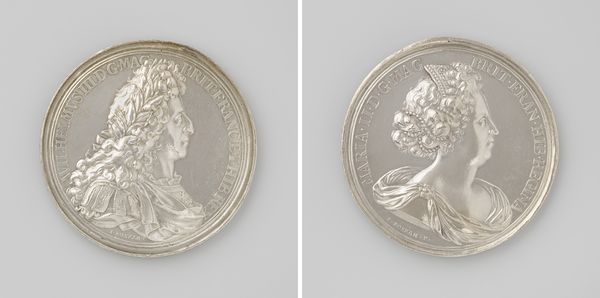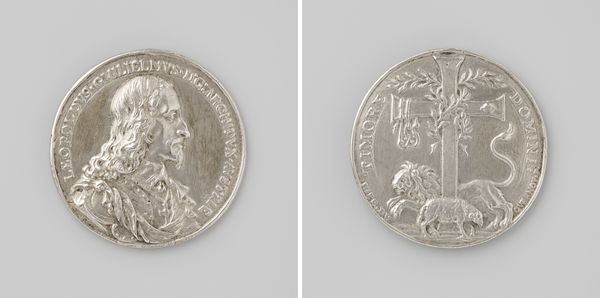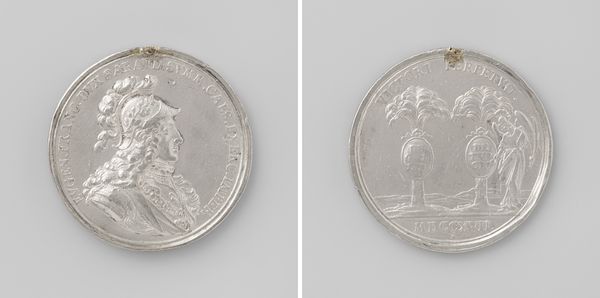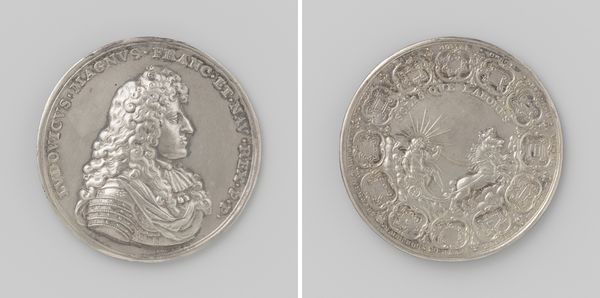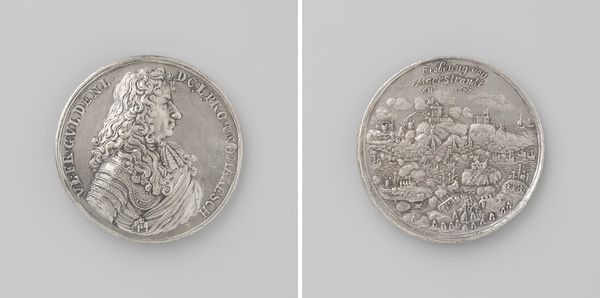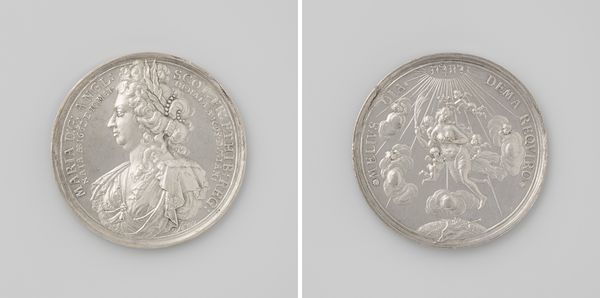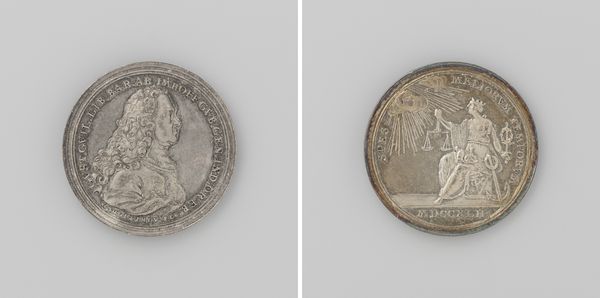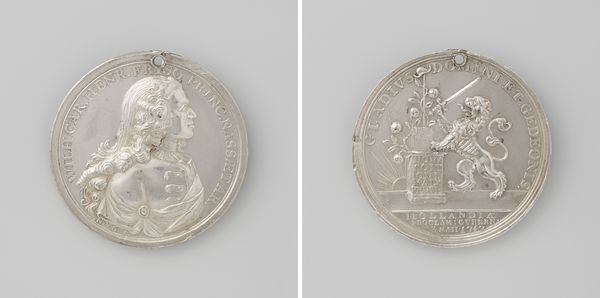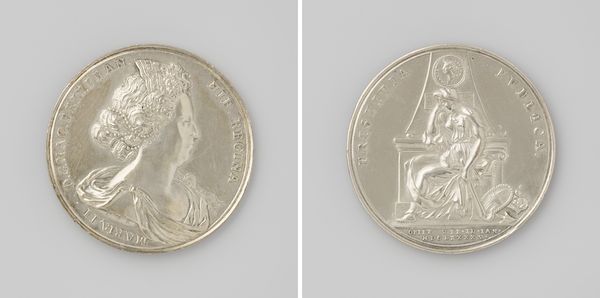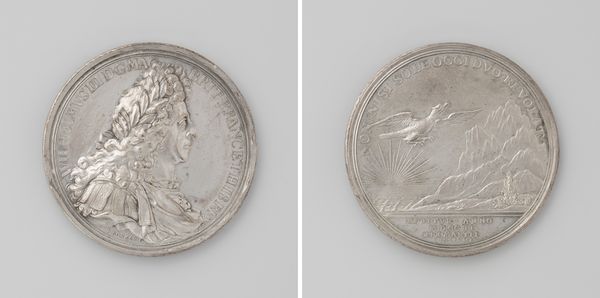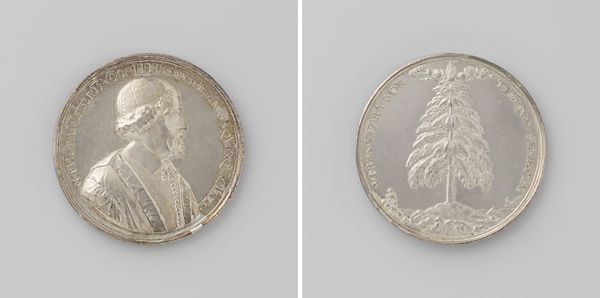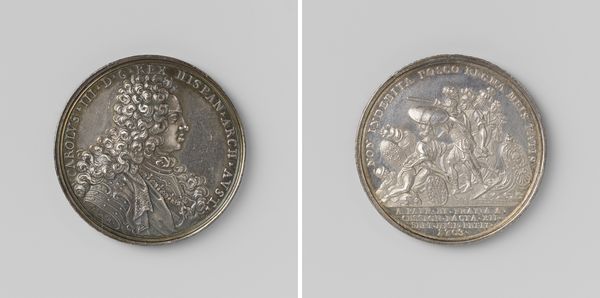
metal, sculpture
#
portrait
#
baroque
#
metal
#
sculpture
#
history-painting
Dimensions: diameter 5 cm, weight 264 gr
Copyright: Rijks Museum: Open Domain
Curator: This is a rather stark object. My first thought is that it looks like a relic carrying a somber narrative, probably with intense political implications. Editor: You’re right, this is an anonymous piece called "The Murder of the De Witt Brothers," made in 1672. It's a Baroque artwork currently housed at the Rijksmuseum. Considering the context, it's far from merely political—it’s intersectional, deeply intertwined with themes of power, betrayal, and public violence. Curator: Fascinating! Can you tell me more about the materials and craftsmanship? It looks like it’s crafted from metal; perhaps silver or pewter. It appears to be die-struck, and I wonder if that choice of fabrication informs the broader commentary here? The mass production suggests its widespread consumption. Editor: It’s a complicated artifact because we need to consider not just how it was made and the materiality of it, but also how the brutal assassination it depicts played out as a very public spectacle, especially how gender impacted the reactions to this event, as their deaths represented more than just the loss of two men. It exposed a fissure in the very ideals the republic espoused. Curator: True. From a purely materialist perspective, the metal, chosen for durability and value, speaks to a desire for permanence – perhaps a memorial, but also maybe a cautionary tale meant to endure through generations. Editor: Precisely. It prompts reflection on the societal values that inform who gets mourned, remembered, and by what methods. It acts as a symbol loaded with the complexities of Dutch history. The symbolism goes further. The execution of the De Witt brothers mirrors, for some scholars, the patriarchal crisis reflected in tragedies and literature from the period. The "womanly" lament attributed to Johan de Witt became, essentially, a critique on leadership at the time. Curator: The depiction of the shipwreck is powerful. What does the symbolism signify from the Materialist perspective? Editor: Shipwrecks have always represented states failing. Here, with violent and intense waves on the other side, it could point at how the masses consumed the narrative being made. Its small scale would make it almost ubiquitous among Dutch houses, perhaps also hinting at something easily discardable, easily reproducible and available at the ready. Curator: What is clear is that the object encourages critical awareness of not just history, but the narratives that survive from it. The combination of textures and iconography, combined with its accessible method of manufacture, is a complex approach to the production of grief. Editor: The dialogue between material reality and socio-political narrative helps unpack both Dutch society then and offers a warning about what we consume and what narratives gain traction. The study of this art can encourage the pursuit for justice across genders, race and more.
Comments
No comments
Be the first to comment and join the conversation on the ultimate creative platform.
